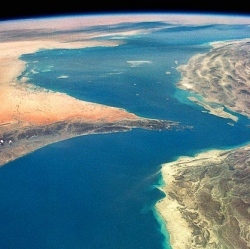
The Falcon Heavy has been on Elon Musk’s mind for years: A rocket bigger than anything else currently in operation, only outstripped by the moon rockets of the Apollo program. He’s been plotting the rocket since 2005, when he mused about strapping three nine-engine booster rockets together.
When SpaceX’s first rocket, the Falcon 9, flew in 2008, strapping a trio together as a Falcon Heavy by 2013 seemed feasible to the company.
But the schedule kept slipping, and major accidents in 2015 and 2016 that destroyed Falcon 9 rockets forced the company to focus on returning that vehicle to flight. The goal is now to fly in fall 2017, but skeptics remained.
In April, keen observers of the rocket company’s operations spotted a large rocket stage in Arizona, en route from the company’s Los Angeles headquarters to its engine-testing facility in Texas. On Tuesday (May 9), the company shared a video of the first test of the rocket:
The display suggests the company is confident about making its launch deadline. The first flight of the rocket will be a test with a demonstration payload—SpaceX used a wheel of cheese during a Falcon 9 test flight.
The first flight should be a spectacle. With three times the amount of rocket engines firing at lift-off compared to the SpaceX Falcon 9, the rocket will immediately be the most powerful in operation in the world. Assuming lift-off and delivery of the payload to orbit is successful, the real sight will come at the end of the flight: All three reusable boosters are expected to return to landing pads at Cape Canaveral, just like the Falcon 9 does, fourteen-story triplets plummeting through the air before landing gently on the ground.
Getting to the launchpad will depend on a number of factors, and not just the engineers working to qualify the new rocket for flight. The company will need to successfully complete the eight Falcon 9 launches on its schedule this summer, including a May 15 launch for Inmarsat that was originally expected to fly on a Falcon Heavy.
But should this big rocket get off the ground, dreams of big business in space will soar higher. Until NASA completes its Space Launch System (SLS) or Blue Origin debuts its New Glenn, the Falcon Heavy will be the biggest rocket on the planet, outstripping rival United Launch Alliance’s Delta IV.
SpaceX forecasts that the Falcon Heavy rocket can fly 70 tons of cargo to low Earth orbit, 18 tons of supplies to Mars, and, in case you are planning a trip, almost four tons to Pluto.
